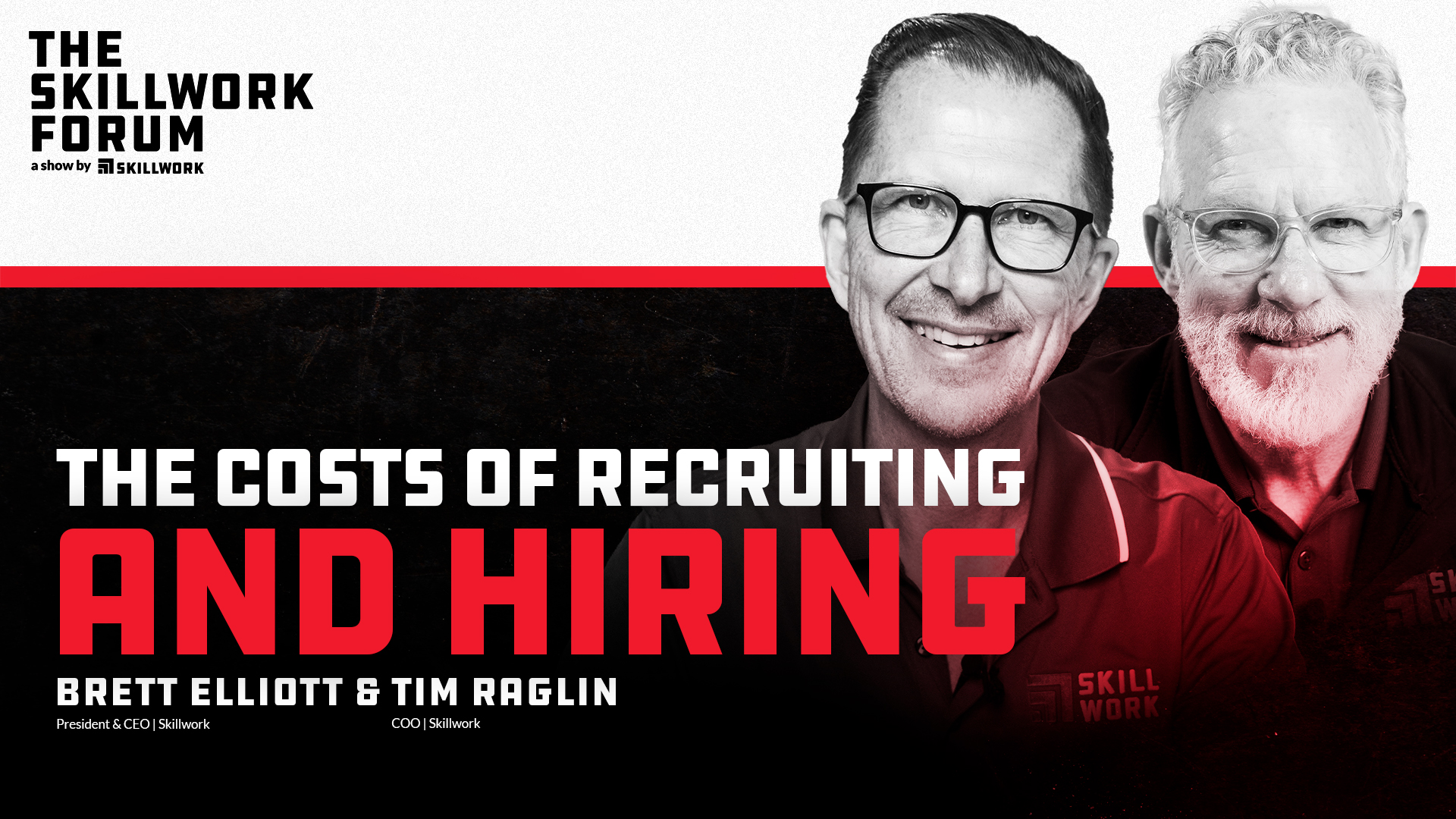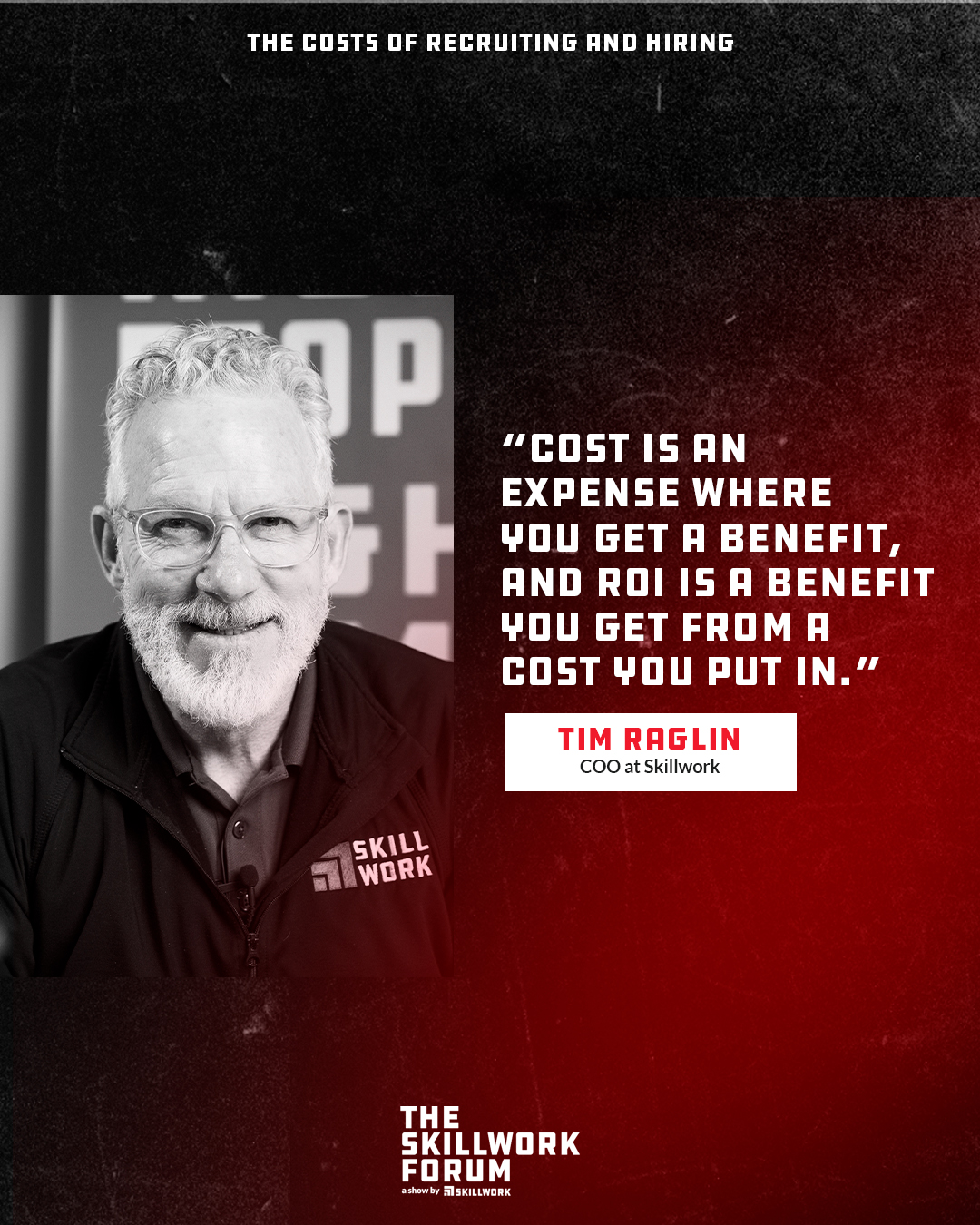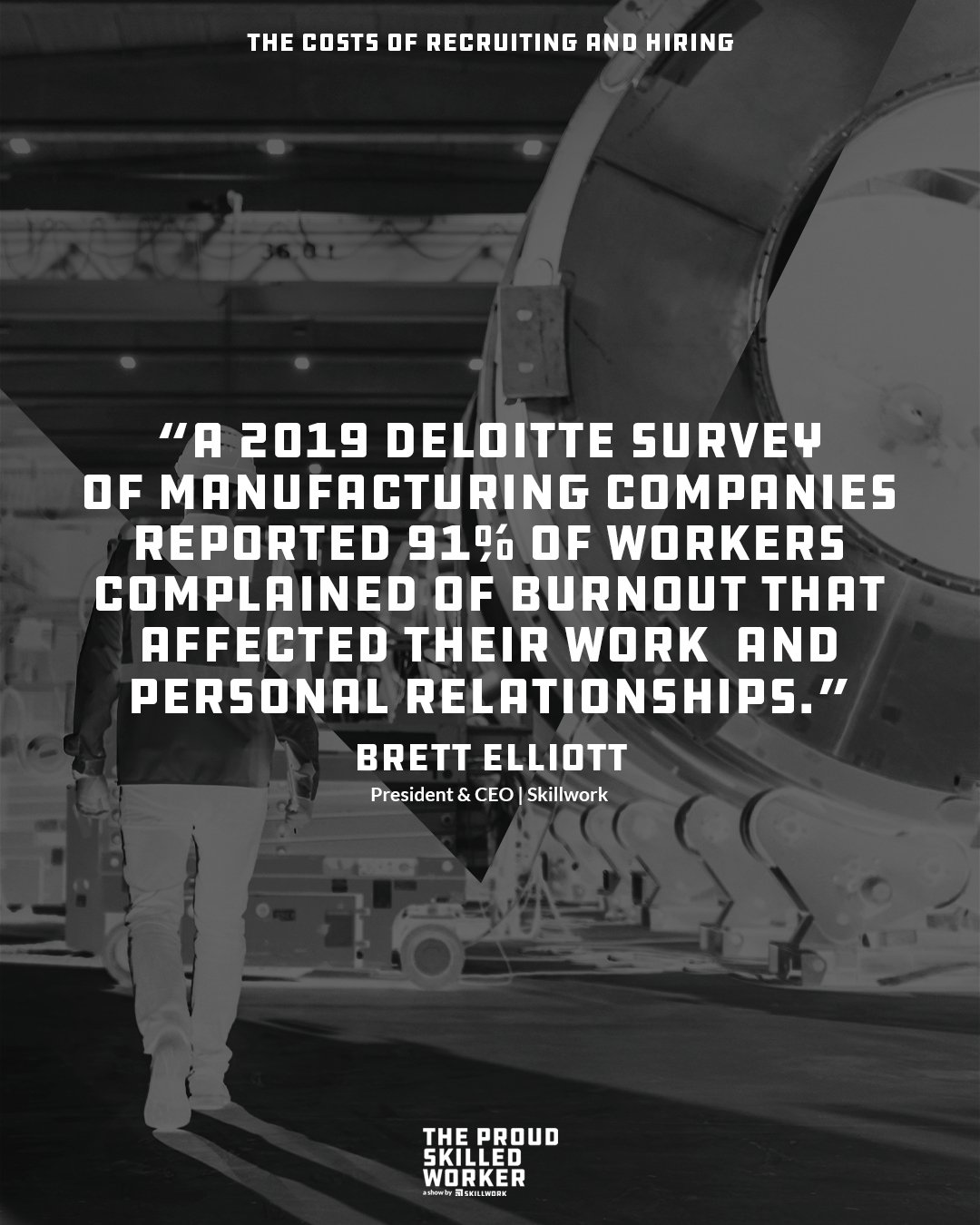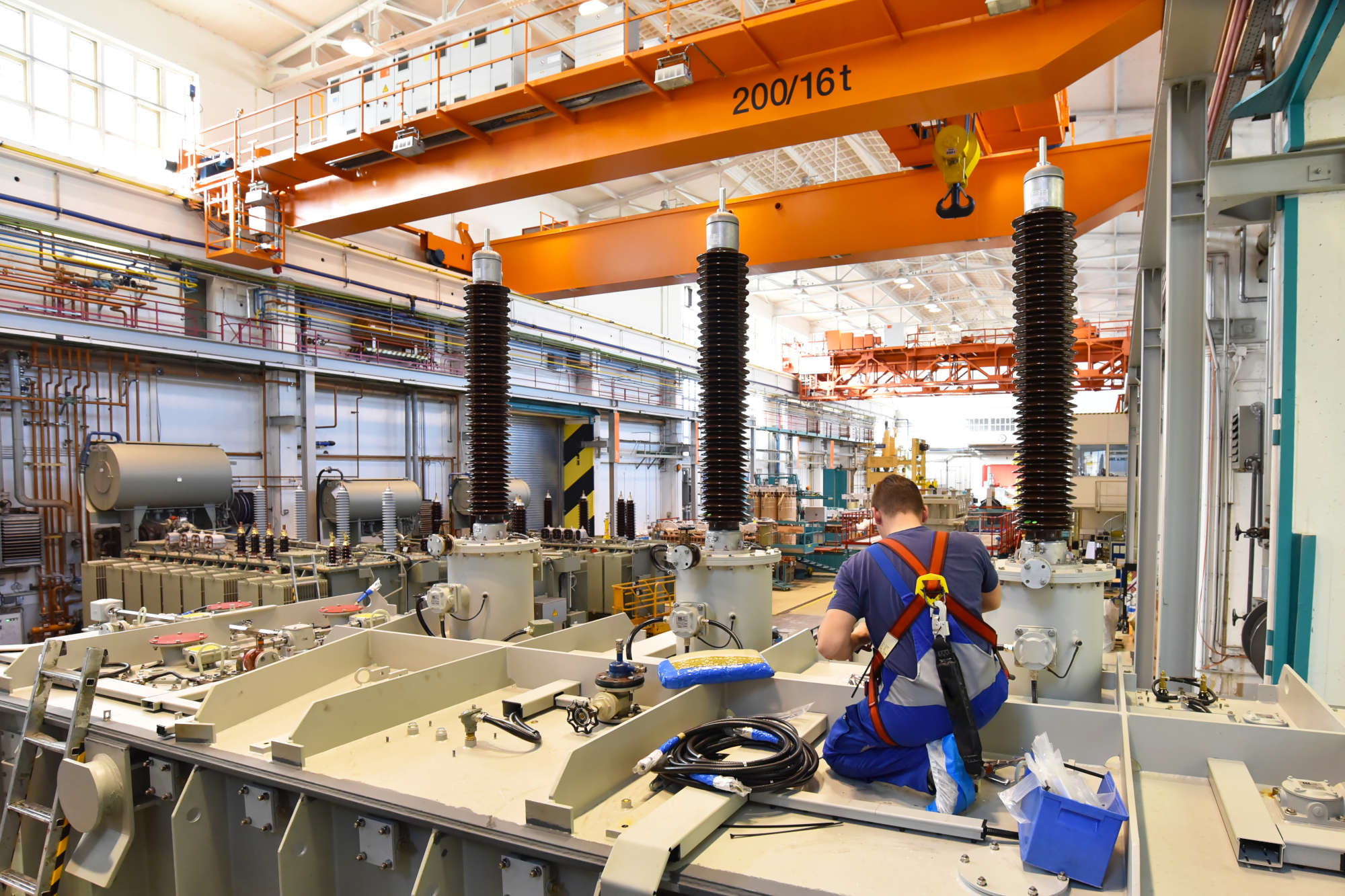Costs of Recruiting and Hiring

As business leaders, we are always analyzing our costs and ROI. Sometimes there are inflated fixed costs, but we accept them because they come with an expectation of increased ROI. Unfortunately, many companies today are dramatically increasing their costs for talent acquisition, but not expecting to see improvements on their talent shortage.
These become sunk or fixed costs.
In this episode, learn the real cost of recruiting and training a new employee, and how you can structure your staffing to see better ROI in today’s strained labor market.
Check it out below or keep reading for more 
Before we begin, let’s define some common terminology.
Cost: an expense with a benefit (for example, paying utilities to run a facility)
Return on investment (ROI): the benefit we get from the cost we put in
Many costs are unavoidable for businesses, and while we try to keep them down whenever we can, the real strategy comes in with intentional costs to get an ROI. When it comes to hiring and staffing, it’s important to get a true picture of all costs involved and what benefits you get from each.
Upfront and Ongoing Costs
One of the largest costs of recruiting and hiring is the internal team you have to find and train new workers. In recent years, there has been a huge increase in HR spending. Companies knew they needed to find more talent, so they increased their HR budgets. At the time, business leaders believed they would get a good ROI from their investment—they would fill positions, have more efficient facilities, healthy workplace culture, etc.

Unfortunately, the reality is far from their initial goals. Some companies are increasing their HR budgets as much as 100% despite knowing they won’t see a return on that investment. This makes the budget for an internal staffing team a fixed cost.
The question begs to be answered: are we getting a return on our investment, or has it become a sunk cost?
Internal cost of hiring a new employee: $20,600
Years ago, companies didn’t need talent acquisition to hire skilled workers, they just hired the people that showed up for work. Today, hiring is much different—especially in the skilled trades. There is an upfront cost for hiring each new employee, covering things like:
- Talent acquisition group or HR team
- Cost of publishing on job boards, trade magazines, web searches
- Background checks
- Equipment
- Training
- Signing bonuses
The consensus is that the average cost for each employee is $20,600.
Not only that, but the longer it takes to find workers, the more costs add up. Multiply that number by the number of openings you have in your company, and those costs increase rapidly.
Fixed cost for additional talent and support staff: $200,000 to over $500,000
If you’re employing talent acquisition professionals to manage your hiring, there are additional fixed costs. Let’s say you have one person managing 10-20 job openings. This adds:
- Salary (average $100,000 annually)
- Computers, office furniture, technology
- Travel, job fairs, conferences
- Training
When you add all this up, the fixed cost to employ a talent acquisition staff for a small to medium sized company is easily over $200,000 annually. For a large company, it can easily surpass $500,000 as the overall budget increases.
If you’re a business leader and getting a great ROI filling open positions and keeping your plants running smoothly, by all means, keep spending the money. However, if your fixed costs keep creeping up and your staffing situation isn’t improving, it’s time to think critically on what you can change to get a return on your investment.
This does not mean you should go out and get rid of all your internal talent acquisition to reduce costs. They’re working with a very difficult labor pool and trying to solve a big problem. At the same time, you should analyze your investments and what you may be able to do to shift or add to your current approach.
Hidden Costs (not finding the talent)
Hidden costs are those that are difficult to put a specific dollar value on, but can often become even larger than the measurable costs outlined above.
Burnout and culture erosion
When you don’t have the skilled workers you need, there’s a real cost to your employees. In a 2019 Deloitte Survey of manufacturing companies, 91% of workers reported burnout that affected their work and personal relationships.
Burnout has a huge impact to the culture of your organization as well. We’ve talked about the cost of an unhealthy culture in a previous episode, and trust us when we tell you it is a hole you do not want to find yourself in.
It’s estimated that burnout costs the overall economy $120-190 billion, just in lost productivity. If you step back even further, it’s also closely linked to rising healthcare costs and worker’s comp for your company.

OEE, plant inefficiencies, and downtime
Lowered productivity from being understaffed or having workers suffering from burnout will also have a hidden cost to your business. You may be tempted to lower the bar when bringing in new employees in the hopes of just filling positions. As a result of that, you’ll have not only lower efficiencies and more downtime, but also a significant potential for safety issues.
Customer dissatisfaction
At the end of the day, we have to remain relevant and beneficial to our customers. If you’re not providing a solution to their problem in a satisfactory way, you’ll end up with unhappy customers and profit loss.

As we continue with today’s economic challenges, consumers and customers alike will pay closer attention to where they spend their money. If your customer satisfaction isn’t a priority, you’ll pay for it sooner rather than later. Don’t neglect this key component while you focus on the cost of recruiting and training a new employee.
Conclusion
The bottom line: the cost of recruiting and training a new employee is high. However, the costs of not getting the quality skilled workers you need is even higher, and more difficult from which to recover. As a business leader, it’s vital that you consider if the staffing strategy you’re investing in is working, or if there are things you can improve.
In today’s economic headwinds, it’s vital that every part of your business is operating at maximum efficiency.
If you need help finding the quality skilled workers you need, reach out to us on our website for an obligation-free consultation. We can augment your current talent acquisition team and help you get experienced workers so you can focus on running your business.
Contact us here.


